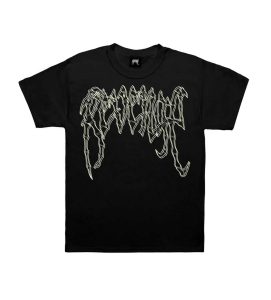Jiyoung Hong’s “Epidermis Lips 2” series is an evocative exploration of the human body’s outermost layer—both as a physical boundary and as a symbolic construct. Through her abstract depictions, Hong aims to dismantle the superficial constraints imposed by societal perceptions of beauty and identity. Her choice of “epidermis” as a central motif extends beyond the biological meaning of skin to encompass broader themes of self-representation, media influence, and psychological restlessness.
Background and Conceptual Framework
Hong’s fascination with the concept of the epidermis originates from a personal anecdote: she describes having a childhood habit of biting the flesh around her fingernails, creating small grooves that would later regenerate. This act of biting and regrowing—creating, erasing, and reconstructing—serves as a metaphor for the recurring cycles of identity formation. She uses this as a foundation for her artistic exploration of the epidermis, presenting it as a mutable, almost impermanent layer that conceals deeper truths
For Hong, the epidermis is not merely a passive barrier; it is an active participant in how identity is negotiated and understood. Her works often employ thermal imaging technology to reframe our perception of the skin, using it to visualize what is usually hidden beneath—a technique that blurs the line between the visible and the invisible. This approach reflects her desire to “delete” the epidermis, symbolically removing the superficial layer to expose the complexities beneath. In doing so, she critiques what she perceives as a modern obsession with outward appearance, an obsession perpetuated and reinforced by mass media’s “lookism” or appearance-oriented bias.
Visual and Technical Execution
The “Epidermis Lips 2” series stands out for its striking use of color and form. The depiction of lips, traditionally a focal point of allure and beauty, becomes a site of transformation in Hong’s hands. She abstracts the lips into amorphous shapes, rendering them in vivid hues of red, purple, and blue. The result is a departure from conventional representations, which serves to destabilize the viewer’s expectations. The distortions are deliberate; they invite the audience to confront their preconceived notions of beauty and recognize the myriad of “layers” that make up human identity.
Her technique often involves layering oil paints in a manner that mimics the striations and textures of skin, creating an almost tactile quality to the work. The lips—depicted in this abstract, layered style—become a canvas onto which Hong projects her critique of beauty standards. By disrupting the familiar contours of the lips, she strips them of their conventional semiotic associations (e.g., sensuality, femininity) and repositions them as symbols of a more complex, multifaceted self.
Themes and Symbolism
Central to Hong’s “Epidermis Lips 2” series is the tension between internal and external realities. The epidermis, as she conceptualizes it, is a site of negotiation between what is visible and what is hidden. Her use of thermal imagery adds another dimension to this theme, revealing “inner” colors that are not typically visible to the naked eye. This approach questions the reliability of surface appearances, suggesting that what we see is not always an accurate reflection of reality.
The lips in Hong’s series, then, become a metaphor for speech and silence, visibility and invisibility. In one sense, the lips are a tool of communication, but in their distorted state, they imply a disruption of that communication. What is being silenced or hidden? What narratives are being obscured by the focus on outer appearances? These questions underpin Hong’s artistic practice, encouraging viewers to look beyond the surface and consider the narratives that lie beneath.
The Role of Media and “Lookism”
Hong’s works are a pointed critique of how media shapes societal perceptions of beauty. By using thermal imaging—technology typically used to detect invisible heat signatures—Hong symbolically “peels back” the layers of her subjects, revealing what lies beneath. This metaphorical act of uncovering is a statement against media’s tendency to perpetuate lookism, an issue Hong believes has reached a crisis point in contemporary society. Her art seeks to disrupt this by presenting a more nuanced view of identity that goes beyond the surface layer.
In describing her concept of epidermis, Hong refers to it as a “superficial tool I want to delete.” This deletion is not a literal erasure but rather a reconfiguration of what we prioritize when looking at others and ourselves. For Hong, the epidermis is a filter through which societal prejudices are projected. By “deleting” it, she is advocating for a mode of seeing that prioritizes essence over appearance, internal realities over external façades
Cultural Context and Reception
Hong’s “Epidermis Lips 2” series has been exhibited internationally, gaining recognition for its unique approach to both technique and theme. It has been featured in exhibitions across Seoul, Singapore, and Los Angeles, where it has been praised for its ability to blend traditional painting with cutting-edge technology. Critics have noted how the series challenges not only aesthetic norms but also cultural assumptions about identity and the body.
In the context of South Korean art, where issues of beauty standards and plastic surgery are often topics of societal debate, Hong’s work resonates deeply. Her critique of lookism and the emphasis on outward appearance aligns with broader cultural conversations about the pressures faced by individuals—particularly women—to conform to certain ideals. Yet, Hong’s work is not limited to this cultural framework; it has universal appeal in its exploration of identity and perception, making it relevant to audiences across the world.
Legacy and Influence
Jiyoung Hong’s “Epidermis Lips 2” series is a testament to her innovative spirit and willingness to tackle complex themes through art. By merging traditional painting techniques with technology, she creates works that are both visually compelling and thematically rich. The series stands as a critique of society’s fixation on the surface and challenges viewers to reconsider what it means to truly see and understand another person.
Her use of the epidermis as a central motif has influenced other contemporary artists exploring themes of identity and the body. The series has opened up new dialogues about how art can intersect with technology to produce new ways of seeing and understanding. As such, “Epidermis Lips 2” is not just a collection of paintings but a broader statement on the potential of art to challenge, disrupt, and inspire.
Through her innovative techniques and thought-provoking themes, Hong redefines the boundaries of portraiture and abstraction, offering audiences a glimpse into the hidden layers of human identity. In a world increasingly obsessed with outward appearance, “Epidermis Lips 2” serves as a powerful reminder to look beyond the surface and consider the rich, intricate stories that lie beneath.
No comments yet.








